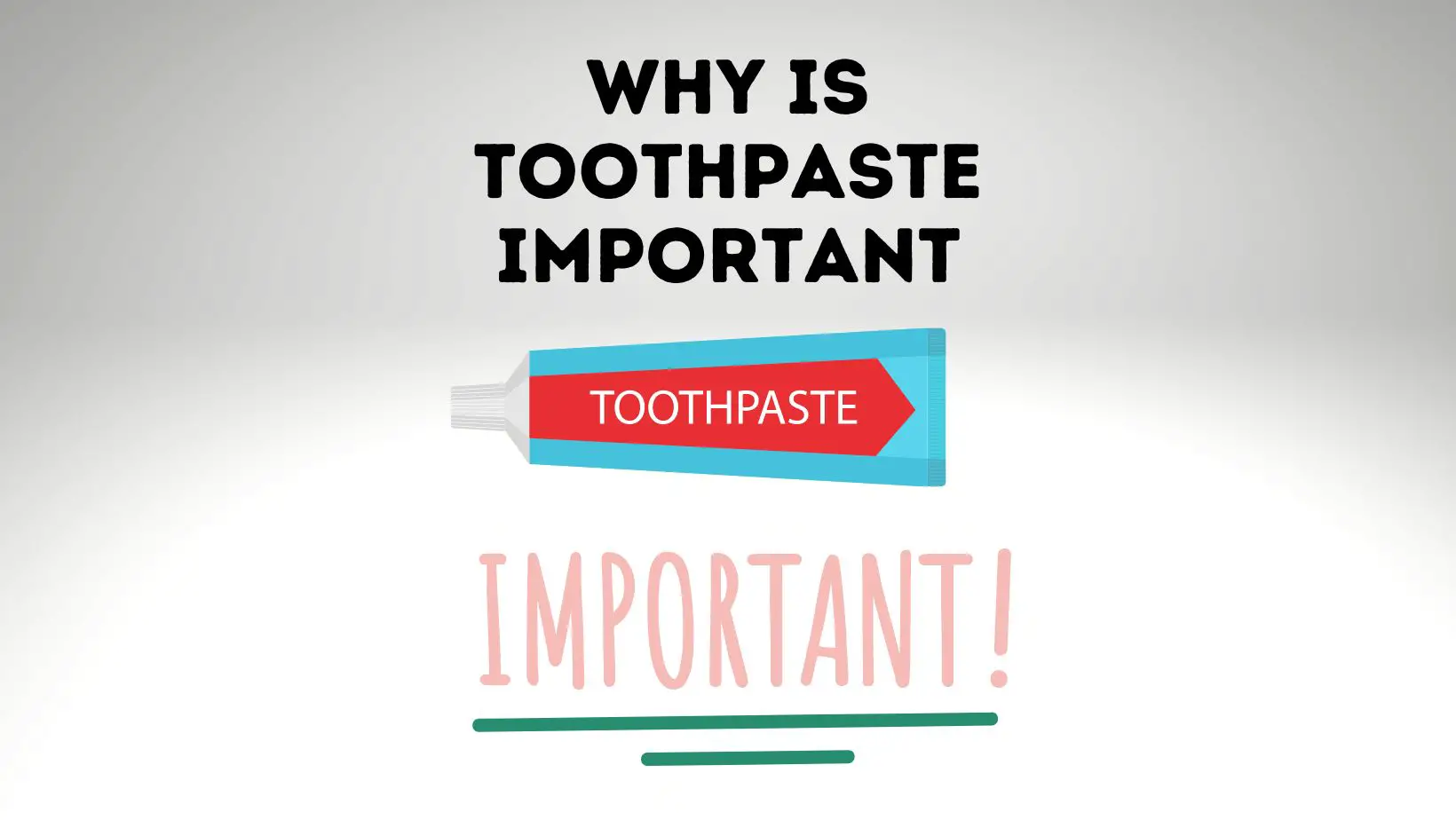
Toothpaste is a vital component of oral hygiene. It helps to keep our teeth and gums healthy and clean by removing plaque, preventing cavities, and freshening our breath. Toothpaste also plays a role in maintaining the overall health of our mouth. Its ingredients, such as fluoride, help strengthen teeth and prevent decay.
Many different types of Toothpaste are available, each with its specific benefits and ingredients. Some toothpastes are designed for sensitive teeth, while others contain whitening agents. It is crucial to choose the right Toothpaste for your needs. Also, brush regularly and effectively to maintain good oral health. In addition, regular dental check-ups, cleanings, and an excellent oral hygiene routine can help prevent serious dental problems.
History of Toothpaste
Toothpaste has a long history, dating back to ancient civilizations. Early versions were made from salt, chalk, and baking soda. In the 19th century, the addition of soap to toothpaste formulas led to widespread use. In the 20th century, fluoride was added to toothpaste to prevent cavities.
The American Dental Association (ADA) 1960 approved the use of Fluoride in Toothpaste. Today, toothpaste comes in a wide range of formulas with different ingredients and benefits, but their basic purpose remains to clean teeth and maintain good oral health.
Common Ingredients in Toothpaste and How do they work?
Toothpaste typically contains the following ingredients and their respective functions:
Abrasives help remove plaque and surface stains by physically scrubbing the teeth. Standard Abrasives in Toothpaste include baking soda and silica.
Detergents: They help spread the Toothpaste evenly and foam to increase cleaning action. Common detergents in Toothpaste include sodium lauryl sulfate.
Humectants: They help prevent Toothpaste from drying out. Common Humectants in Toothpaste include glycerol.
Sweeteners: They add flavor to Toothpaste and make it more palatable. Common Sweeteners in Toothpaste include saccharin and xylitol.
Flavors: They give Toothpaste its taste and fresh breath effect. Examples include peppermint and wintergreen.
Stabilizers: They help maintain the consistency of the Toothpaste. Examples include carrageenan.
Anti-cavity agents: They help prevent cavities by neutralizing the acid produced by plaque bacteria. Examples include sodium fluoride and stannous fluoride.
Desensitizers: They help reduce sensitivity in teeth. Examples include potassium nitrate.
Whitening agents: They help remove surface stains and whiten teeth. Examples include hydrogen peroxide and carbamide peroxide.
The combination and concentration of these ingredients vary between different types of toothpaste (e.g., whitening, sensitive, children’s).
Importance and Benefit of Using Toothpaste
Toothpaste provides the following benefits and is essential for:
Cleaning: It helps remove plaque and food debris from teeth, reducing the risk of cavities and gum disease.
Freshening breath: The flavoring agents in Toothpaste can help mask bad breath.
Whitening: Some toothpaste contains ingredients that can help remove surface stains and whiten teeth.
Strengthening enamel: Some toothpaste contains fluoride, which can help strengthen the enamel and reduce the risk of cavities.
Preventing sensitivity: Some toothpaste specifically designed for sensitive teeth contain ingredients that help reduce tooth sensitivity.
Promoting overall oral health: Using Toothpaste regularly helps maintain good oral hygiene, which is essential for oral health and well-being.
It is essential to use Toothpaste regularly as part of a comprehensive oral hygiene regimen, brushing, flossing, and regular dental check-ups.
How Often Should I Use Toothpaste?
It is recommended to use Toothpaste twice a day, once in the morning and once before bed. Brushing regularly with Toothpaste helps remove plaque and food debris, reducing the risk of cavities and gum disease.
In addition to regular brushing, it is also essential to floss daily to remove plaque and food particles from between teeth and along the gum line, where a toothbrush cannot reach.
It is also recommended to see a dentist regularly for professional cleanings and check-ups.
Brushing Without Toothpaste- Is That Ok
Brushing without Toothpaste is better than not brushing at all, but using Toothpaste provides added benefits. Toothpaste helps remove plaque and food debris freshens breath, and can contain ingredients to strengthen enamel, reduce sensitivity, and promote oral health.
However, if Toothpaste is unavailable, brushing without Toothpaste is still beneficial in removing plaque and food debris from teeth. It’s essential to continue to brush regularly, even without Toothpaste, and to use fluoride-containing toothpaste as soon as possible.
It is also recommended to floss daily and see a dentist regularly for professional cleanings and check-ups.
Choosing the Right Toothpaste
When choosing a toothpaste, consider the following factors:
Fluoride content: Most toothpaste contains fluoride, which helps strengthen enamel and reduce the risk of cavities. Choose a toothpaste that contains the right amount of fluoride for your needs.
Oral health concerns: If you have specific concerns, such as sensitivity, cavities, or gum disease, look for a toothpaste specifically designed to address those issues.
Taste and flavor: Choose a toothpaste with a taste and flavor that you enjoy, as this can increase the likelihood of regular use.
Ingredients: Some people may have allergies or sensitivities to certain ingredients in Toothpaste, such as sodium lauryl sulfate. Read the ingredients list and choose a toothpaste appropriate for your needs.
Age: Children’s toothpaste often has lower fluoride levels and is formulated for their unique needs. In contrast, toothpaste for seniors may contain added ingredients to address age-related concerns.
It’s also important to talk to your dentist about your specific oral health needs and which Toothpaste may be best for you. They can provide personalized recommendations based on your individual needs and history.
Other Important Products for Dental Care other than Toothpaste
In addition to Toothpaste, there are several other essential products for dental Care, including:
Toothbrush: Choose a toothbrush with soft bristles and a brush head that fits comfortably in your mouth, and replace it every three to four months.
Floss: Daily flossing helps remove plaque and food particles between teeth and along the gum line, where a toothbrush cannot reach.
Mouthwash: It can help freshen breath and kill bacteria in the mouth. However, do not substitute mouthwash for brushing and flossing.
Interdental brush: For cleaning the spaces between teeth and along the gum line, an interdental brush can be a helpful addition to your oral hygiene routine.
Dental floss picks: Dental floss picks can be a convenient and effective alternative to traditional floss for on-the-go cleaning.
Water flosser: A water flosser uses a stream of water to clean between teeth and along the gum line. It can be beneficial for people with braces or other dental appliances.
Electric toothbrush: An electric toothbrush can be a good choice for more thorough cleaning. They can be more effective at removing plaque and promoting gum health than manual toothbrushes.
Talking to your dentist about your specific oral health needs and which products may be best for you is crucial. They can provide personalized recommendations based on your individual needs and history.
Bottom Line
Toothpaste is essential for maintaining oral health by removing plaque and freshening breath. It provides additional benefits, such as strengthening enamel and reducing sensitivity. Regular use of Toothpaste and proper brushing and flossing techniques can help prevent cavities, gum disease, and other oral health problems. It is essential to choose a toothpaste that is appropriate for your individual needs. Also, talk to your dentist about the best oral hygiene products.

Hi, This is Lyn, I suffer from dental sensitivity for a very long time. PowerToothpaste.com is where I share my views of various toothpaste brands, along with tips on how to use toothpaste and what to look for when purchasing.
